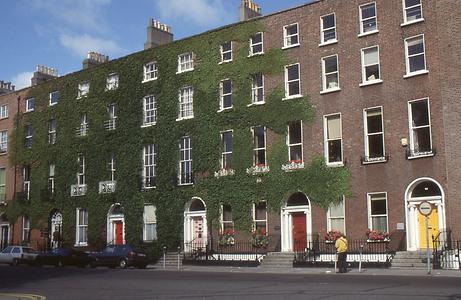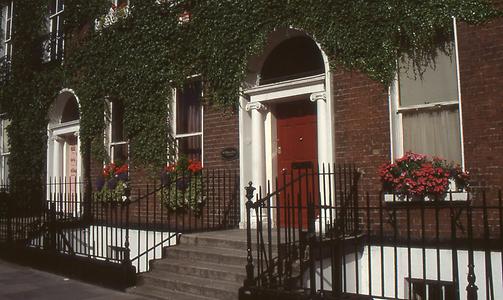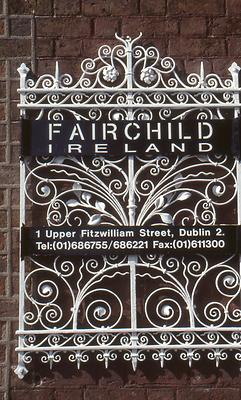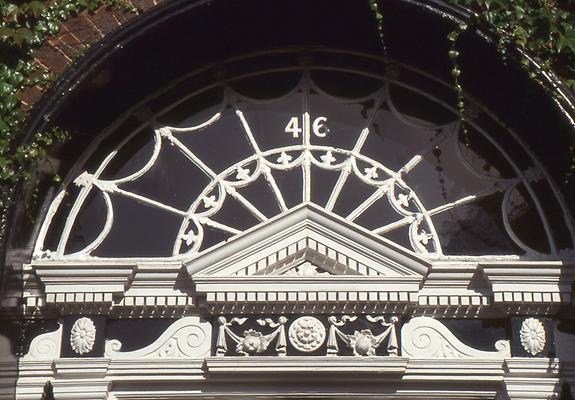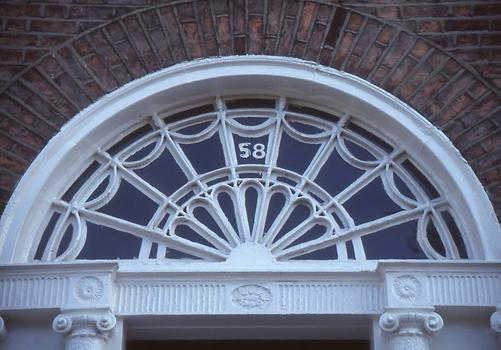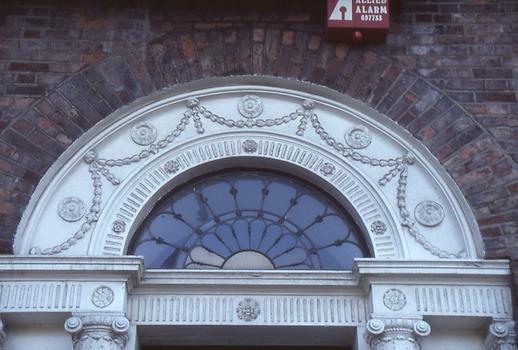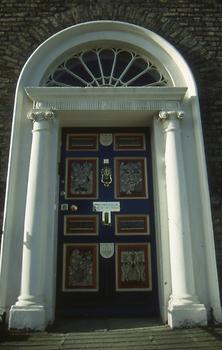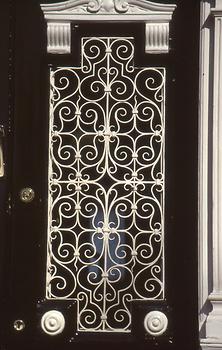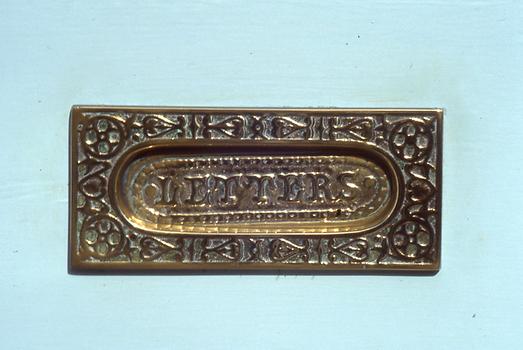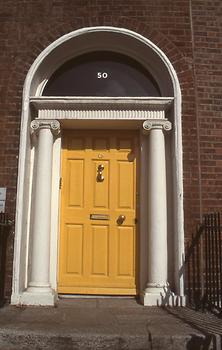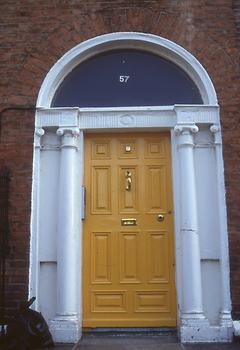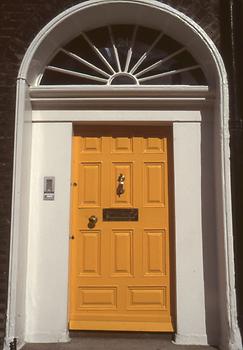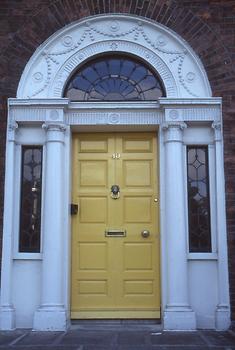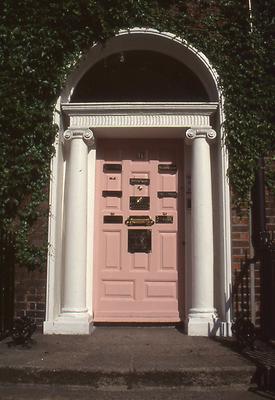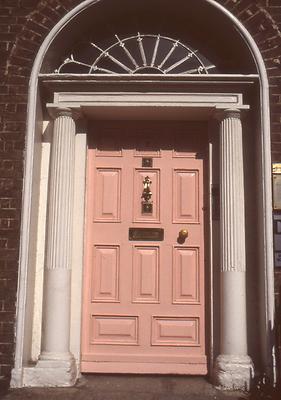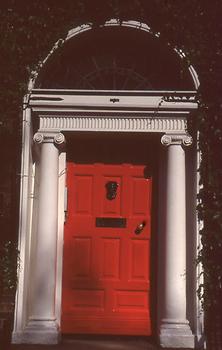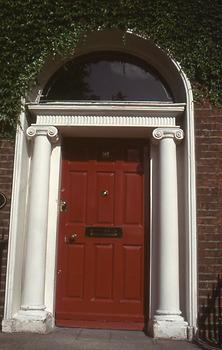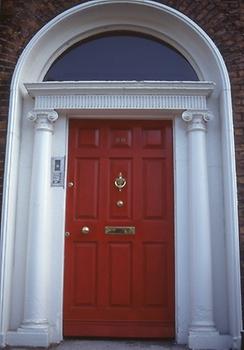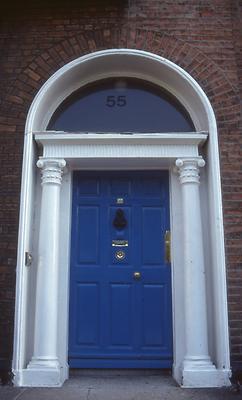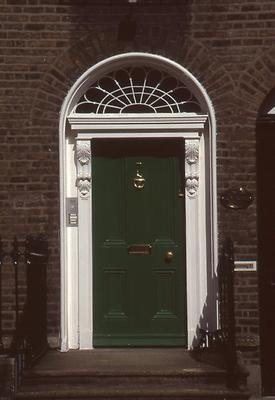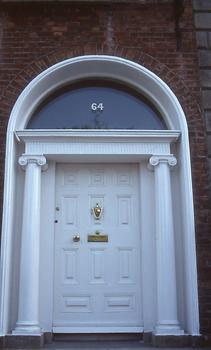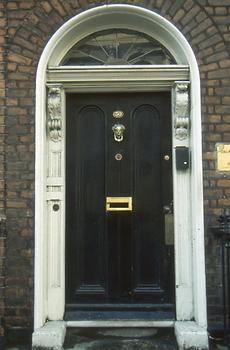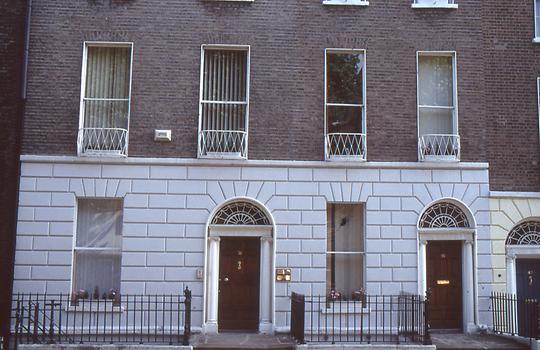Boring Facades and Imaginative Doors#
Georgian Front Doors in Dublin#
By
The Pictures were taken by the author in 1992 and 1993. They are part of the archive „Bilderflut Jontes“
Dublin, the capital of the Republic of Ireland Irland, Dublin , rebelled against Britain in 1916 and had to pay a terrible price for it. The Romans had never succeeded in incorporating the island which they called Hibernia into their empire. Here, however, a Christianity based on monasteries which in times of Rome's impotence began to bring the christian belief to the West and the center of Europe through its religious messengers which can still be found today in our calendar through the names Patrizius or Gallus. Patrick, who himself came from the Roman province of Britannia as a Christian slave, baptized numerous kinglets of pagan Celtic tribes and thus also added their subjects to Christian Europe. Today he is the national saint of Ireland.
With circular towers, high crosses and the unique sacred manuscripts, this time is still present today, although the ruins of the monasteries and churches are reminders of what the British have done to the steadfast catholics there after the denominational detachment from Rome under the rule of King Henry VIII and his successors. The Irish, who tried to defend themselves vehemently again and again, were nearly completely deprived of their Irish-Gaelic language and folk culture which were replaced by the English language and the British, urbanized culture. Only in 1922, the Irish Republic (Irish: Eire) became independent after long battles. Only the protestant Northern Ireland remained with the United Kingdom and is still the source of violent political to warlike conflict. Today the population of the republic is 84% catholic.
It seems that Dublin, in Irish “Baile Atha Cliath”, has become a British city. At the same time it has high performances in urban planning, architecture Architektur and intellectual urbanity, which demand unconditional respect. The intellectual Great Britain is partly based on the achievements of the Anglicised Irish. Just think of the poets Jonathan Swift, James Joyce, Oscar Wilde, William Butler Yeats and Samuel Becket, just to mention a few examples of the literary sector.
The facades of these elongated residential buildings are very, very simple in their plain symmetrical structure. They are brick buildings, sometimes with bright plaster. The basement can be reached through a ditch from the outside. Steps lead to the front doors. At that time between the 18th and the beginning of the 19th century, the style of classicism prevailed in Europe. In England, too, the Baroque of Christopher Wren was replaced by such a shift towards the architecture and lines of the ancient Roman and Greek classical age, called Neoclassicism in England.
An architectural feature of Dublin are the doors of long-term residential buildings, called Georgian Front Doors, which have become a special and also touristic marketed symbol of Ireland's capital. They come from a time that is one of the most glamorous in Dublin, when the United Kingdom 1714-1837 was governed by kings from the House of the elector of Brunswick-Lüneburg or kings of Hanover in a personal union. Four rulers of these wore the name Georg / George, among which especially George IV. excelled. Under his rule, Dublin experienced its most glorious time, in which also the buildings which one enters through these special front doors, developed. These all follow the same construction scheme and identical proportions, but in color and small details they are structural individuals for themselves.
The portal is lined by two pilasters, which mostly have an ionic capital and a figural textured epistyle as an upper doorframe.
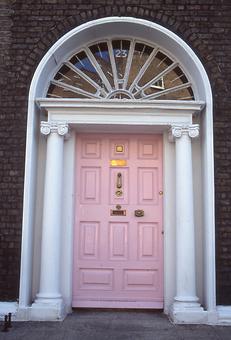
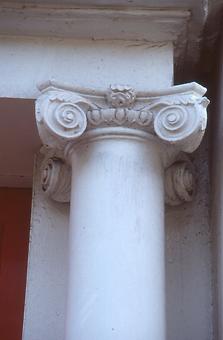
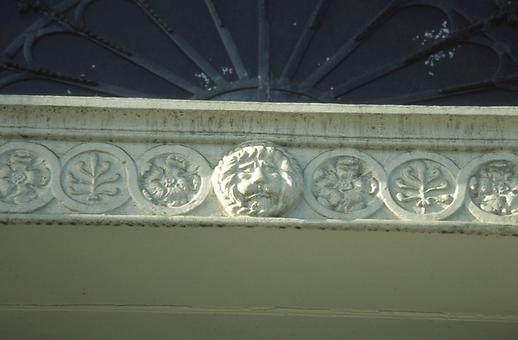
The most beautiful sequels of such doors in Dublin can be found in Fitzwilliam Street and on Fitzwilliam Square, likewise in Mount Street Upper and on Merrian Square.
The doorleaf is set colourfully and gives the classical door a friendly touch. Often there can also be found a beautiful doorknocker cast in bronze or brass.


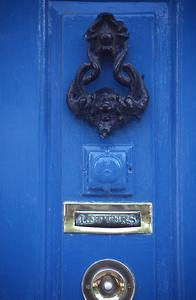
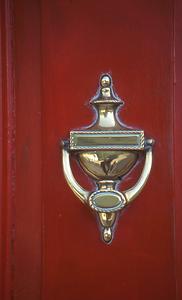
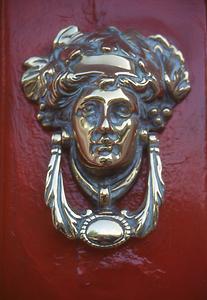
Furthermore, sometimes also the door panel is stuctured and features a slot for letters.
One of the most frequently used colours for doors is dark blue.
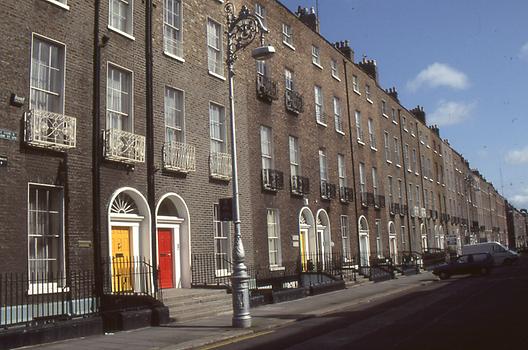
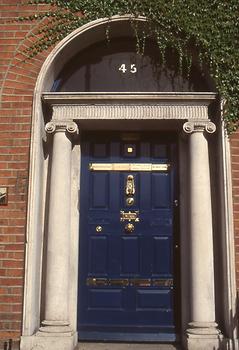
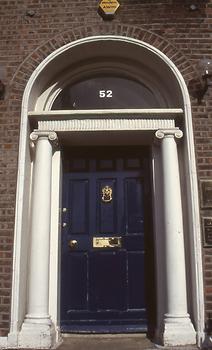
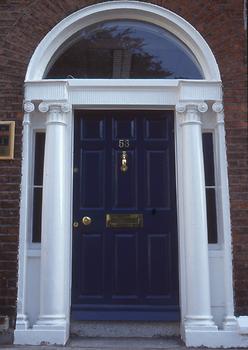
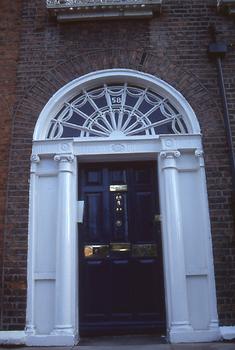
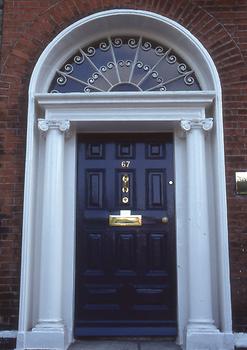
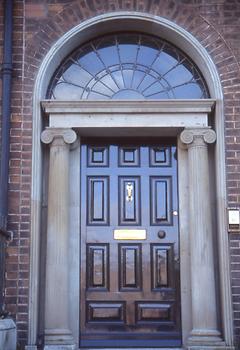
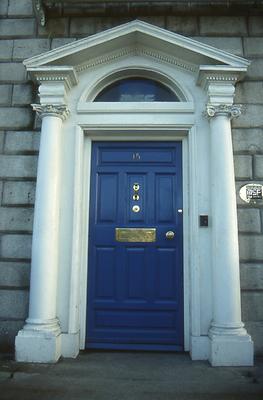
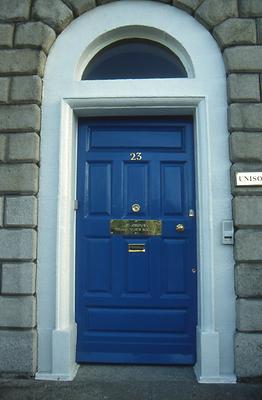
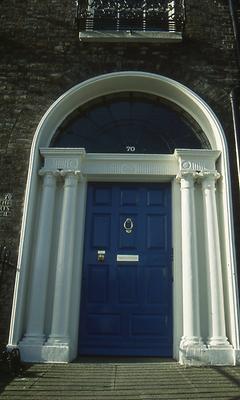
Yellow doors seem to make a friendlier, a bit golden impression.
The colour pink seems to convey candour and cheerfulness, appearing like an invitation.Red seems to tell one about the house owner´s need for representation.
Light blue and green are rare colours for Georgian Front Doors.
White and black have a certain nobleness, because they are not actually colours.
